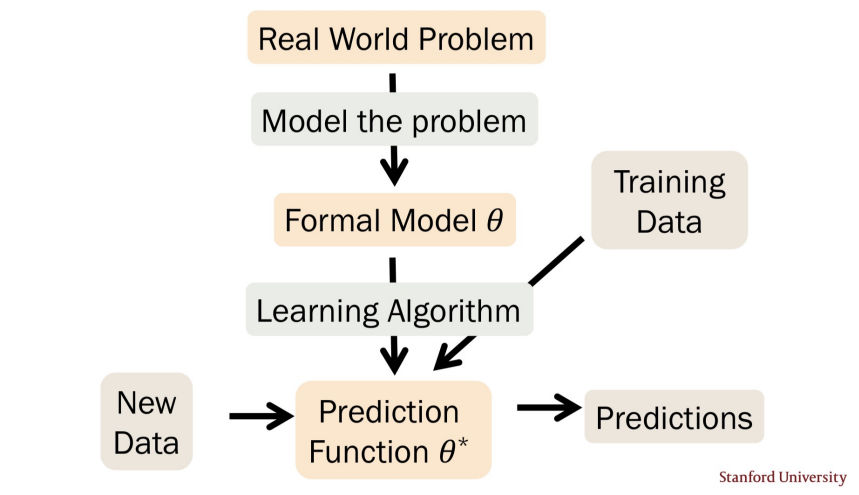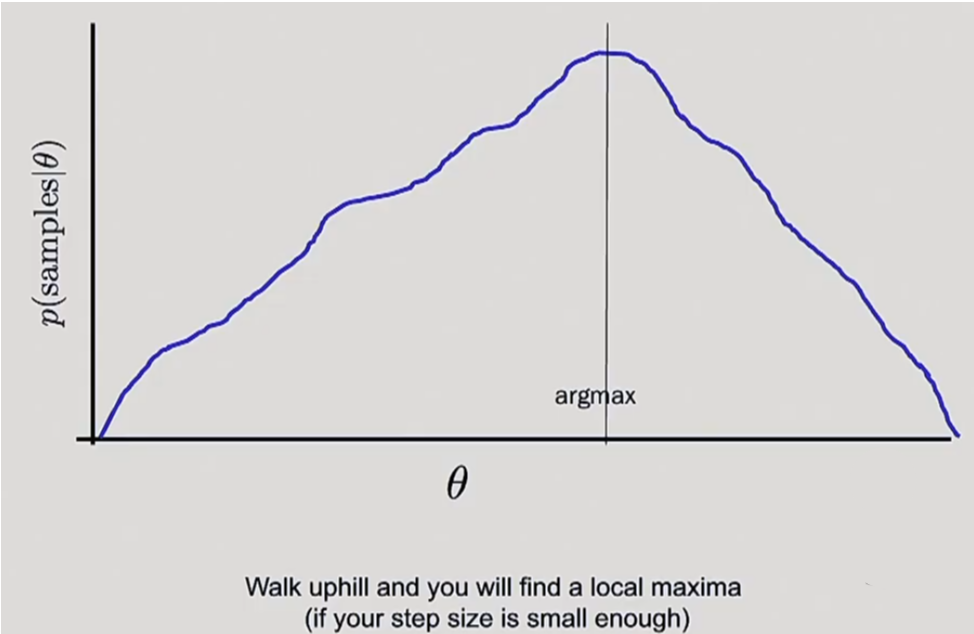Lecture 21: MLE
Parameters Estimation
What are Parameters?
- $Y = mX + b$
- $\mathcal{N}(\mu, \sigma^2)$
$\theta = (m, b)$
$\theta = (\mu, \sigma^2)$
Parametric models: Given model, params yield actual distribution
- $\theta$ can be a vector of params.

Maximum Likelihood with Poisson

IID (Independent and Identically Distributed) rv $X_1, \dots, X_n$
$X_i \sim \text{Poi}(\lambda)$
- PMF: $$f(x_i \mid \lambda) = \frac{e^{-\lambda}\lambda^{x_i}}{x_i!}$$
- Likelihood of all the data (given a particular $\lambda$): $$ \begin{align*} L(\lambda) &= f(x_1 \dots x_n \mid \lambda)\\ &= \prod_{i = 1}^{n} f(x_i \mid \lambda) \quad \text{(IID)}\\ &= \prod_{i = 1}^n \frac{e^{-\lambda}\lambda^{x_i}}{x_i!} \end{align*} $$
The log’s gonna go live inside the house and break down the columns as it goes there. $$ LL(\lambda) = \log\prod_{i = 1}^n \frac{e^{-\lambda}\lambda^{x_i}}{x_i!} = \sum_{i = 1}^n \log \frac{e^{-\lambda}\lambda^{x_i}}{x_i!} = \boxed{ \sum_{i = 1}^n - \lambda + x_i \, \log{\lambda} - \log{x_i!} } $$
We want to choose the $\lambda$ to make this expression as large as possible $\rightarrow argmax$ of this log-likelihood.
- Differentiate w.r.t. $\lambda$, and set to 0: $$ \frac{\partial LL(\lambda)}{\partial \lambda} = \sum_{i=1}^{n} \left( -1 + \frac{x_i}{\lambda} \right) = -n + \frac{1}{\lambda} \sum_{i=1}^{n} x_i $$
$$ \Leftrightarrow 0 = -n + \frac{1}{\lambda} \sum_{i=1}^{n} x_i \Leftrightarrow \lambda = \frac{1}{n} \sum_{i=1}^{n} x_i $$
Maximum Likelihood with Bernoulli
$D = [0, 1, 0, 0, 1, \dots, 0]$
IID (Independent and Identically Distributed) rv $X_1, \dots, X_n$
$X_i \sim \text{Ber}(p)$
What is $\theta_{MLE} = p_{MLE}$?
- Determine formula for $LL(\theta)$ $$ LL(\theta) = \sum_{i = 1}^{n} \log f(X_i \mid p) $$ with $$ f(X_i \mid p) = \begin{cases} p, & \text{if } X_i = 1 \\ 1 - p, & \text{if } X_i = 0 \end{cases} $$ Wait, this is very cute and helpful but it’s not at all differentiable? Let’s see Chris Piech’s slickiest trick!
Differentiable PMF for Bernoulli
Optimization (argmax)
Gradient Descent

Calculate deriviative of the likelihood given every $\theta$ for the blue curve would be too computationaly expensive.
- Start with any $\theta$.
- look at the likelihood of your $\theta$ $\rightarrow$ look at the deriviative at that point to see which way to go.
- can’t see the whole curve.
We don’t care abt the likelihood, we care abt the $\theta$ that gives the likelihood.